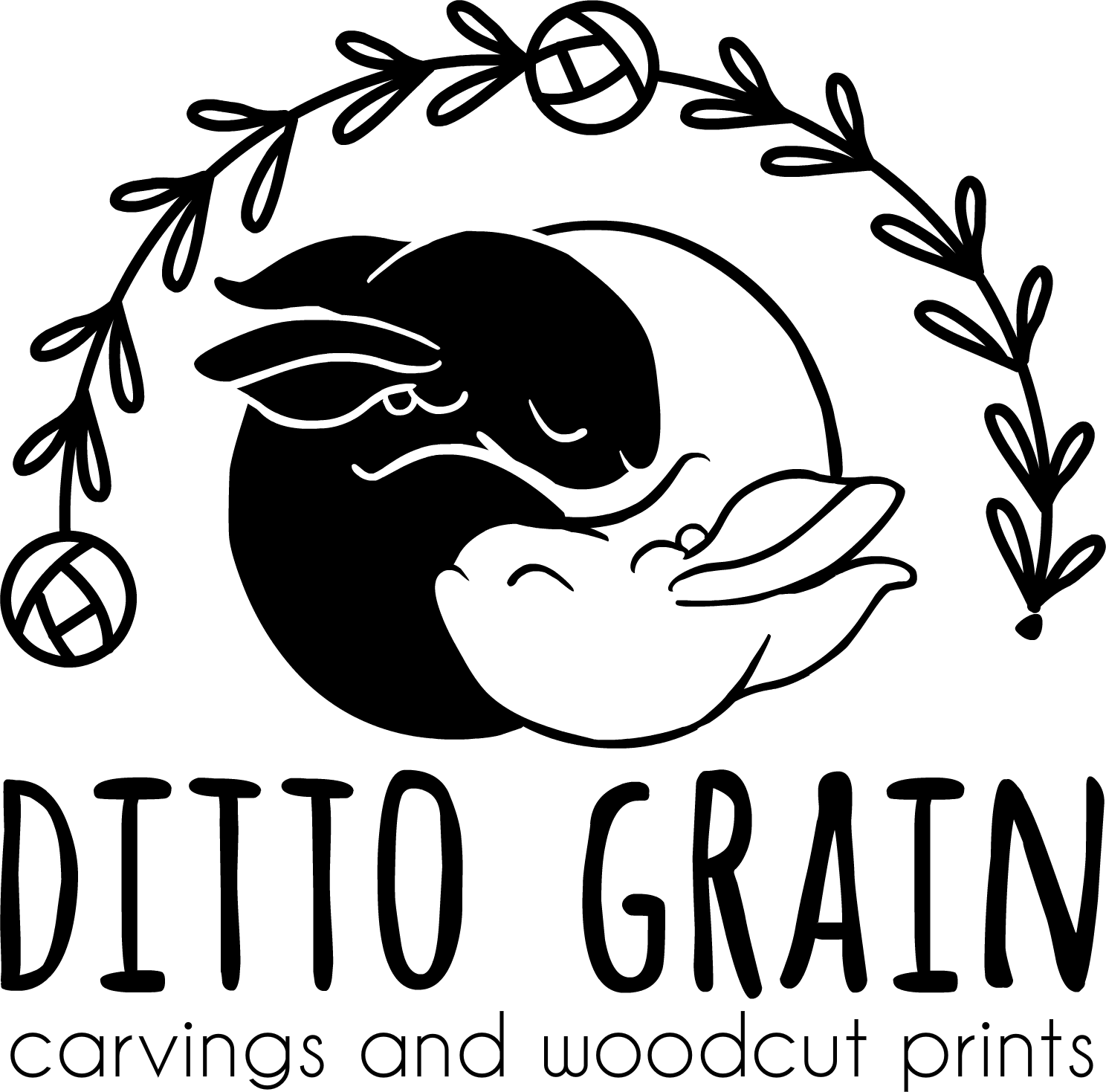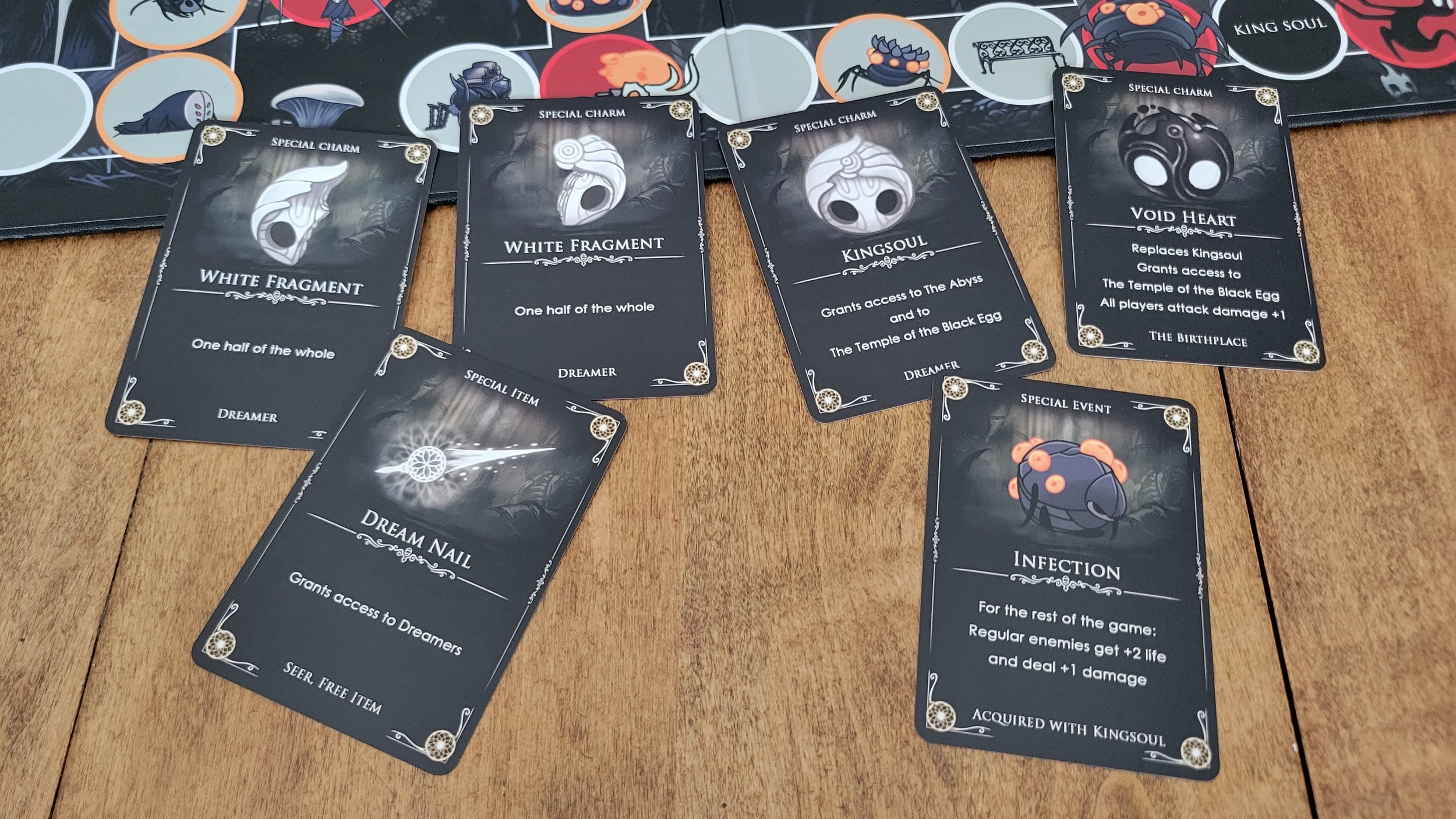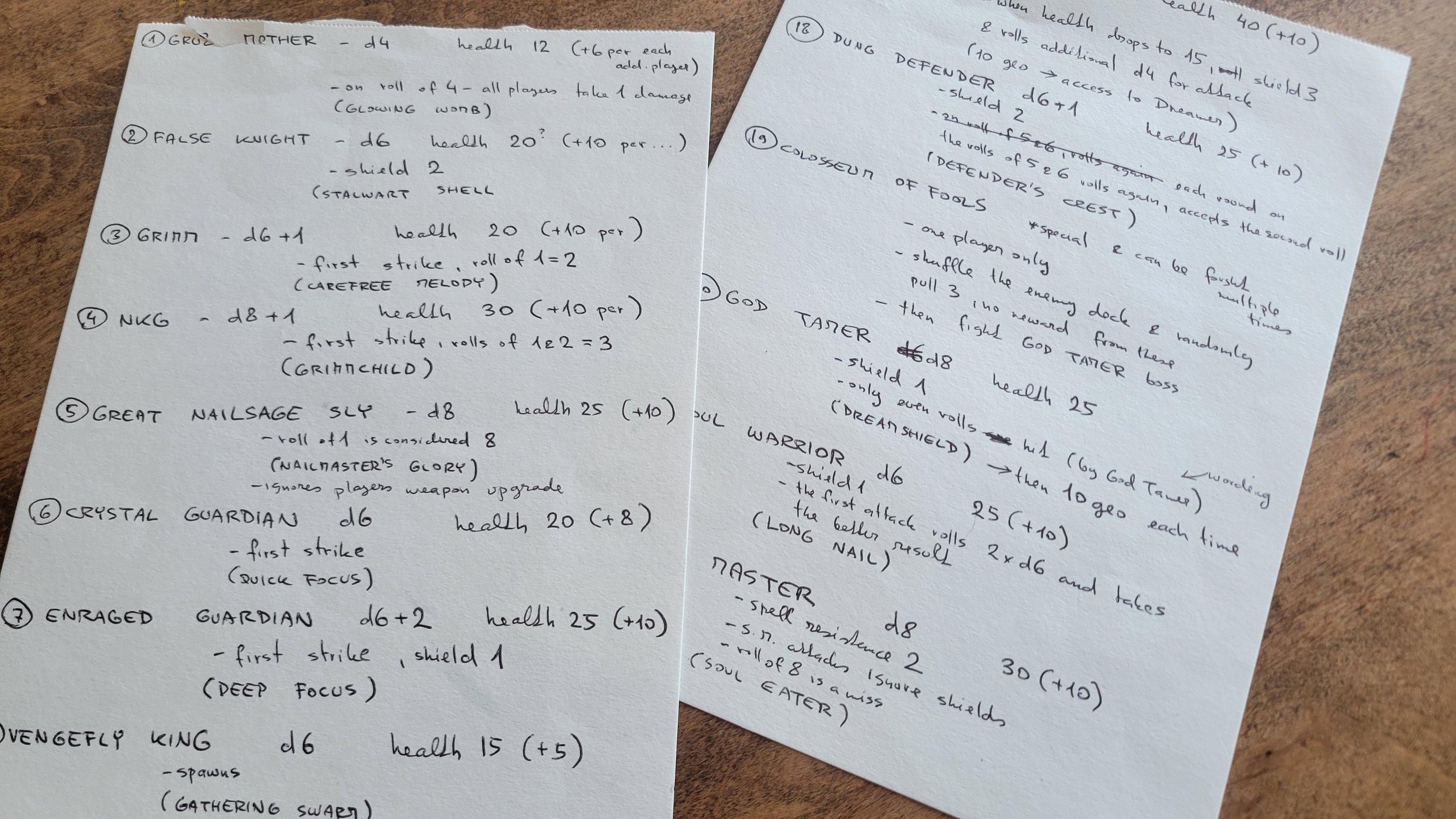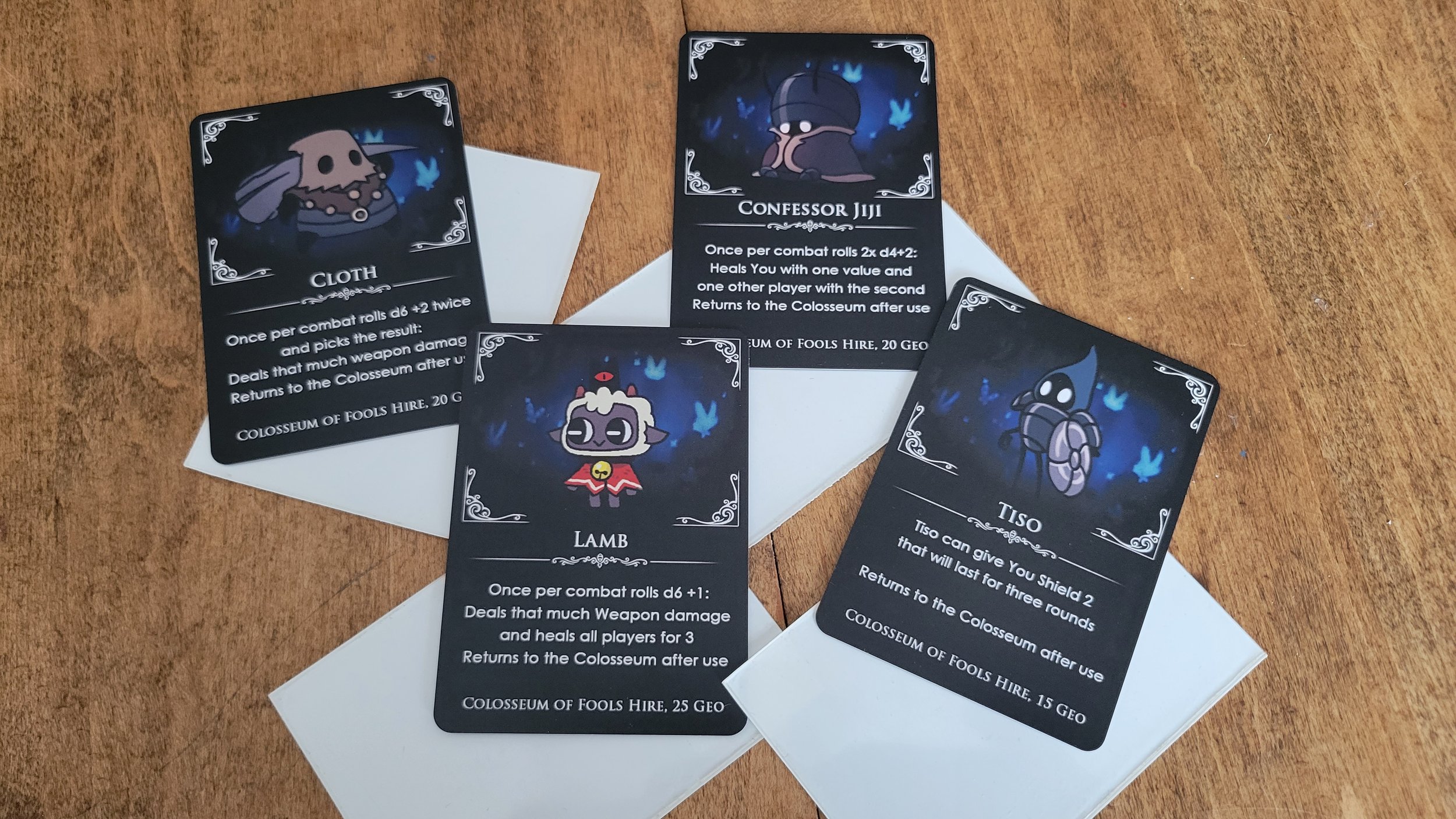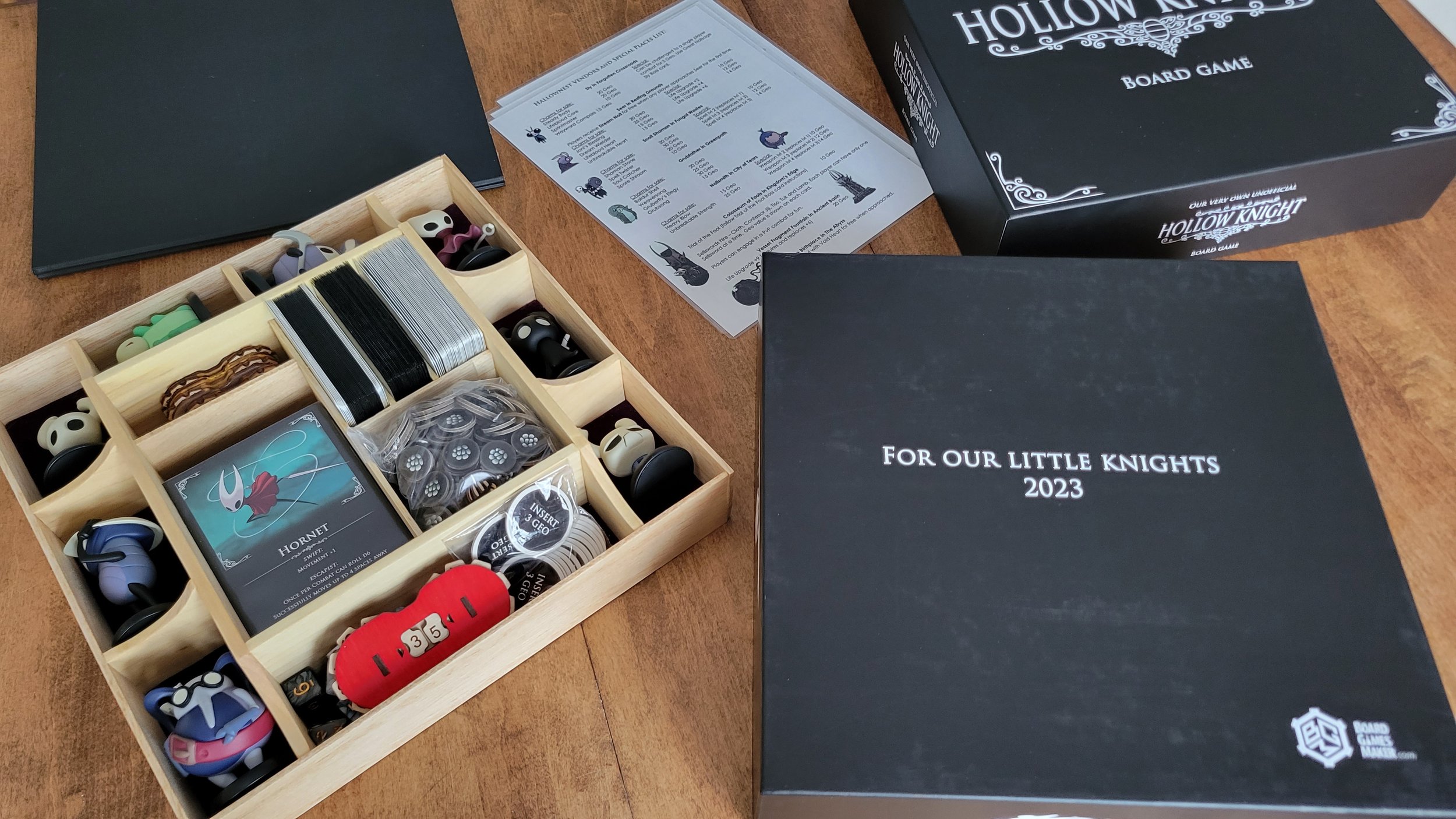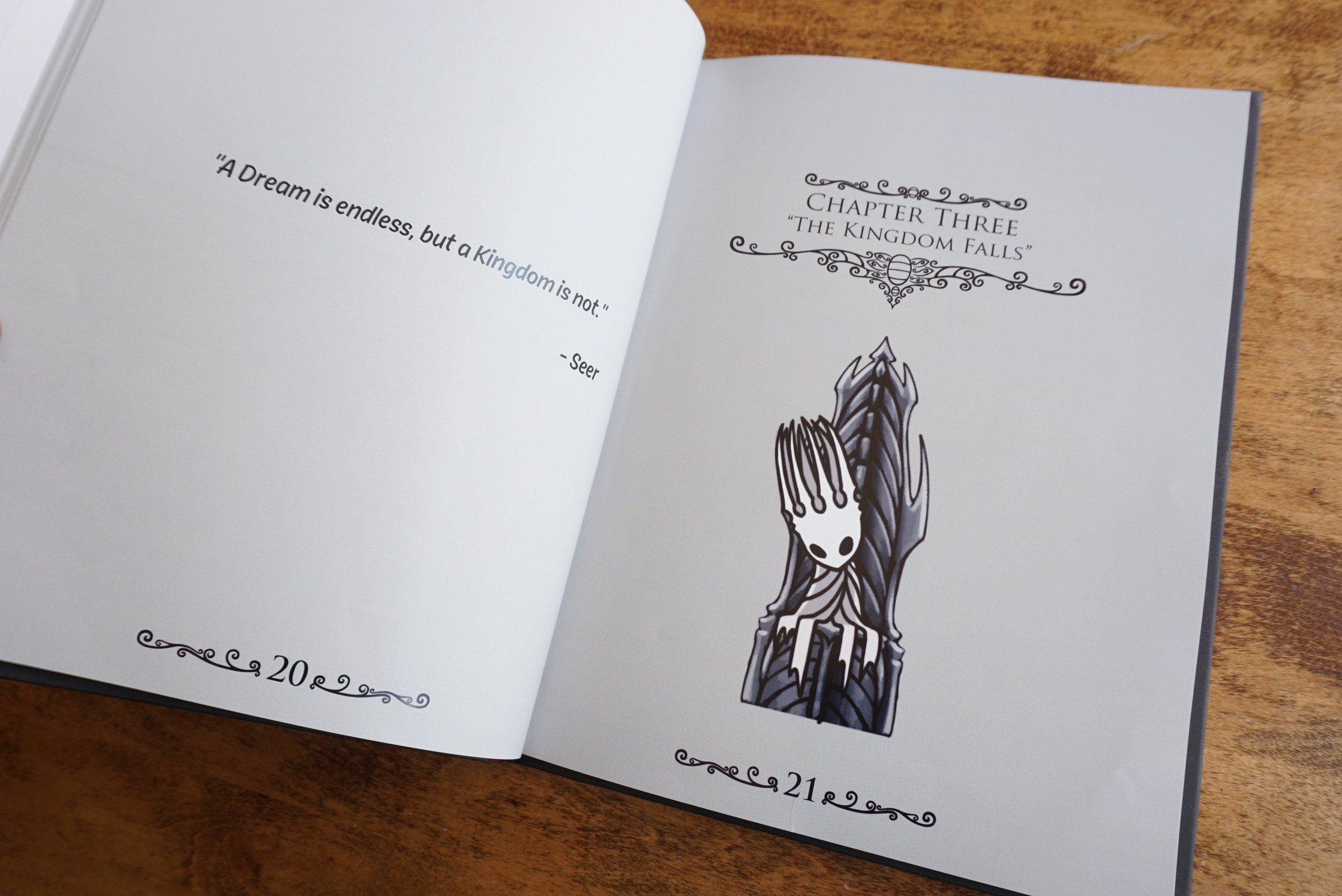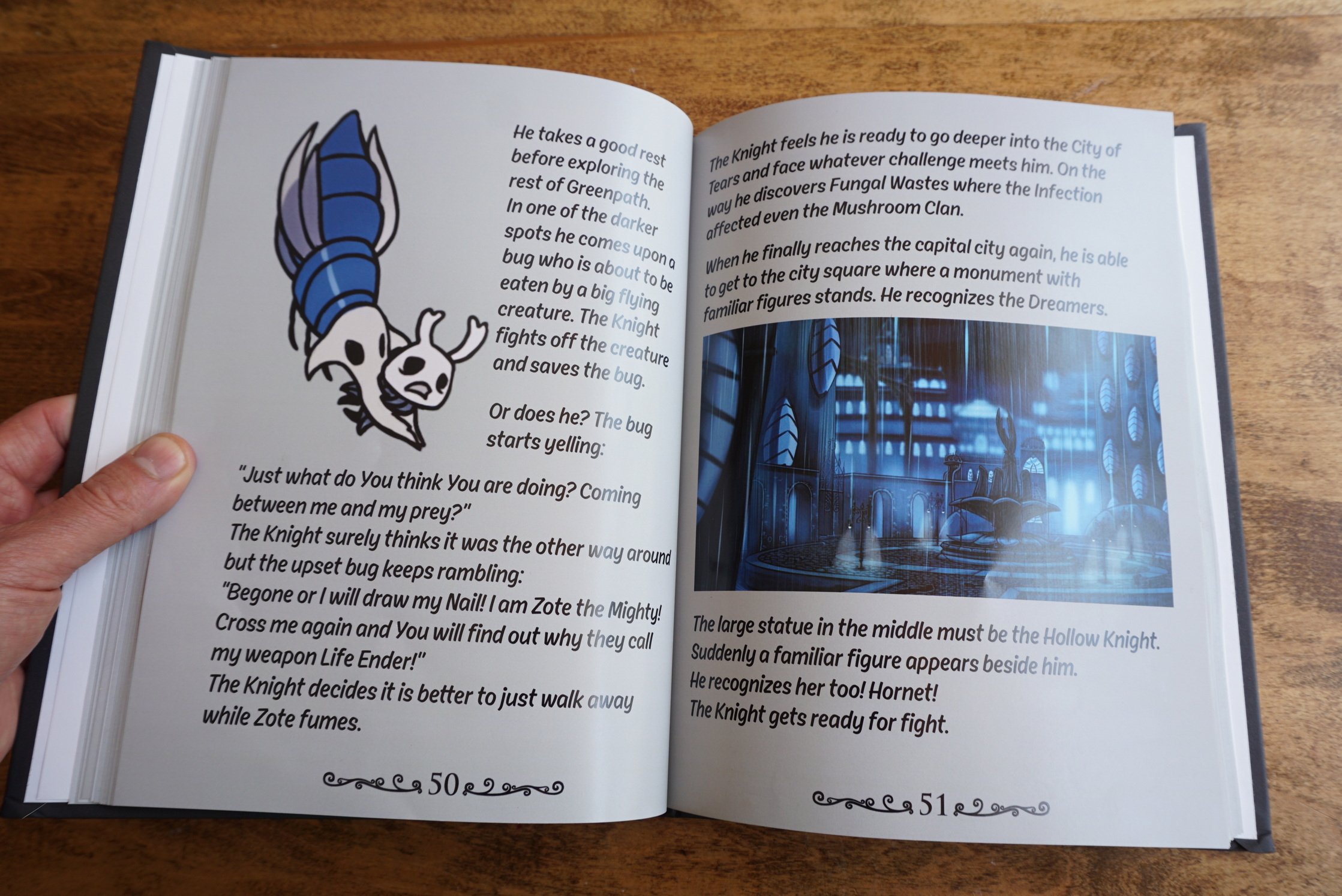Hollow Knight - unofficial board game
This is not a carving related post but as so many people requested to see more information about the board game we made for our kids, I decided to write a specific post for it here. This project took around nine months to finish with a huge amount of help coming from my wife, Alana. Alana did so much like creating Photoshop templates for the cards and finalized the game board (I’ll provide more details later in this post). She also made the layout for the game box.
The idea for a HK inspired board game had been in my head for a very long time. Our whole family is obsessed with Hollow Knight and I have created lots of wood carving fan art in the past and have even made a hardcover HK lore book for our boys. We often play board games as a family and started doing little silly RPG adventures with Hollow Knight characters. The boys really enjoyed these and it was then when I started coming up with some ideas on how to make it more entertaining for them.
When I saw HK miniatures sold by Fangamer I ordered them right away. At this point I already knew that doing a pure D&D style game wouldn’t work and wanted to have a full fledged board game. When I found that there are companies that print custom made boards, it was a certainty that I would make the game I’d been thinking of so often.
The miniatures are shown in the pictures above. Each of them is a playable character with unique abilities, weapons, spells, and a recommended play style. The archetypes could be summed up as damage dealers, tanks, and support.
The work on the map layout was an ever-changing chore as I wanted all the areas of the Hollow Knight game in it including all the related bosses and rewards. The one caveat was that the map had to fit reasonably on a square game board.
Once I thought I had the life size map figured out, I did 2/3 version on four pages that were scanned so Alana could perform the real magic.
And she did such an amazing job! I wanted only the circle spaces filled with pictures from the game and maybe adding some background colour, but Alana instead went all out and found in game assets to use.
The result is absolutely stunning and I appreciate all the work she did as it comes to life as we play it.
As I mentioned before, Alana also did all the templates for the cards, characters, enemies, charms, and the special items. The game would look so pitiful if it wasn’t for all the hard work and detail put in here. It took a very long time for me to even be able to start filling up those templates. Although, the one thing that I was fairly confident about were the characters’ abilities and how the weapons would work.
Each playable character has two unique abilities that sometimes define what Charms the character should go for in order to be strong enough in the endgame. The only two I was struggling with were Cornifer and Grubby. However, the ideas came to me, were changed, and eventually scratched during the process of the rest of the game creation. In the end I made both of them into quite weak support characters, instead of characters with any major attack output. I think that goes well with how they are perceived in the video game. Grubby is a friendly healer who cannot die and Cornifer has a unique ‘Scholar’ ability which allows him to manipulate certain dice rolls.
The characters either have their own unique weapon, or in the case of Shade and Grubby, a spell. Each weapon or spell has four levels and usually gets some bonus when fully upgraded. The upgrades can be purchased at Nailsmith and Snail Shaman. Life upgrades are purchased from the Seer and the last upgrade is found deep in the Ancient Basin. I guess as in any RPG game of this style, the levels must be purchased in order.
Similar to many other games, the reason for having weapons and spells separated is to have two different damage types. Some Charms and abilities grant Shield value and these prevent weapon damage but not spell damage. On the contrary some tough bosses have Spell resistance value, which works the other way. Shade has a unique ability called ‘Void’ and it prevents one damage from any source, triggering for each separate instance. One extra game mechanic regarding damage is a life loss. If something triggers a life loss, it cannot be prevented by any means. There are only a very few situations when this happens though and is used mostly to fit the theme (people who played the video game surely remember Hollow Knight self inflicting damage).
Making the Charms was definitely my favourite part of the process. Once again I tried to keep some theme of the original Charms while being workable in the board game version. There was also the need to have each Charm tied to either a particular Boss or a vendor as there are not simple discovery points on the game map. I spent hours looking at the printed Charms and doing notes on the side. Considering what each individual Charm could do in our game and who drops it. I must say I came up with some wild ideas that were cool, but eventually had to scratch them for simpler abilities. After all, I still had to remember we were making the game for our kids.
Charms are divided into four categories: Offensive, defensive, miscellaneous and special. The first three can be equipped by characters and each character can have two Charms of each category equipped at one time (there is no limit on simply having the Charms). I originally played with the idea of notches and the Charms having different equip cost but once again, those ideas were getting into a more hardcore game territory geared towards adults. Players can find all the original Charms including both Carefree Melody (dropped by Troupe Master Grimm in this case) and Grimmchild (dropped by Nightmare King Grimm). The difference being that only one of these could be acquired in the video game.
Special Charms are not equipped by any individual player, but rather serve as a game progress mechanic and are displayed on the side of the game board. Here we have two White Fragments, which are eventually replaced by Kingsoul. Players must visit all three Dreamers to acquire them. There is no order in which the Dreamers must be done but it is the third Dreamer that merges both Fragments from previous Dreamers into the Kingsoul. Once again I had more ideas how to make this closer to the video game theme but simplified it in the end. When the player owns the Kingsoul Charm they can try to beat the final Boss of the game.
Void Heart can be acquired in the Abyss. This replaces the Kingsoul and gives the players better damage output for the rest of the game. A special event, ‘Infection’ happens once the Kingsoul is received and it makes regular enemies a bit tougher but as in the video game, they are not a threat at that point and are used mostly for Geo farming when needed.
There are 24 regular enemies around the Hallownest map. These fights can be repeated for Geo reward but players must leave and return to the area to do so or rest on a bench. They are generally made to pose no challenge and be done within 2 turns of fighting. Around five of the regular enemies are pretty tough and players are not able to beat them without some upgrades and Charms as these enemies give better rewards to make it worth the time.
Bosses have more impactful abilities than the regular enemies and designing these was a lot of fun as well. The above sketches of the Bosses were done to figure out the rewards and locations list, the abilities were mostly yet to come.
The Bosses are done on oversized cards to separate them from regular enemies and to fit the ability and fight pattern descriptions. Each Boss drops a unique Charm, except three Bosses that guard the access to the Dreamers (they reward extra Geo instead). I really tried to tie up the Charms and Bosses thematically and you can see a few examples above.
The big difference between Boss and regular enemy encounters is that Bosses can be fought as a team. The extra life value shown on the Boss cards in the brackets is the additional life total the Boss will have for each additional player beyond the first. This is a game mechanic where I really wanted to show the necessity of team work as they are defeated way easier when fought by multiple players at once. The Bosses still drop the same Geo reward and that is when the players again to decide who will take what. Not to completely ruin the cooperative mode by this reward system, I tried to make the Charms very unique in a way they would fit to different characters.
There are Vendors around the Hallownest that sell Charms which are not tied to any Boss. A list of Charms and upgrades for purchase is printed and laminated for easy access to the players. It also shows and describes how to interact with a few special spots on the game map. (Of course I couldn’t just give the players the option to buy Nailmaster’s Glory, a player must do a tough one on one combat with Sly for it!)
The Colosseum of Fools is a place for a late game Geo farming when needed, but it is mostly included to fit the theme. From what we played so far each player can manage to fully upgrade their weapon, spell, and life fairly and easily before facing the final boss.
Speaking of which… The final boss encounter is actually two Bosses that must be fought in succession and losing to any of them sends the players back to the nearest bench. Unlike any other Boss encounters, the final encounter requires all players to be present and fight as a team.
I actually think I could have made Hollow Knight and Radiance hit harder and will likely reprint the cards with stronger attacks. In the endgame the players have so many Charms to work with, and I feel like the final boss/es are simply not hard enough of a climax to conclude the experience of each game.
The rules of the game were in the development until the very end and were always evolving. I went from dice rolling movement mechanics, to simply letting players move up X spaces and choose when to stop (stopping on an enemy must result in fight and Bosses cannot be passed through until defeated). Stagway Stations are used as a fast travel option and must be unlocked before use.
The rules are printed and laminated on two sheets. One sheet shows more of a set up and game play while the other sheet focuses on combat mechanics. I wanted to have it printed as any other game manual but laminated sheets turned out to be a better option considering I needed one for the vendors list anyway.
Other components of the game include Geo tokens printed in the values of 1, 5 and 10 Geo. Life tokens, life counters and random ‘reminder’ tokens. The ‘Insert 3 Geo’ tokens are used during the game setup to cover the Stagway Stations.
I guess there is a bit of woodworking part involved in project and post as I made a custom sized insert to fit all the miniatures and other components inside the box, with the game board sitting on the top of it.
I used balsawood and basswood for this to keep it very light, and then made velvet inserts for the miniatures slots so they could have comfortable sleeping time.
Because the game was only in my head the whole time and there was no play testing, I created a sellsword mechanic where players could hire helpers in The Colosseum of Fools. I wanted to prevent the situation where the final encounter would prove too hard but as I wrote earlier, the opposite was true. Still, the boys liked the idea of hiring these extra characters and were especially happy to see Lamb making an appearance from another video game.
All and all, not bad for our very first board game attempt! Every time the kids have little visitors they want to play it and we need to keep track of multiple sessions at once (as each game takes over two hours to finish).
The boys were very inspired by seeing what can be achieved and are already working on their very own game called “Face Your Nightmares”. We do homeschooling and have extra time to encourage their curiosity and creativity for projects like this. We are looking forward to see what our Little Knights create with this new inspiration.
I hope you enjoyed reading about the making of this game and seeing many details that are included. I received a lot of messages through social media about fine tuning and selling this idea, but it’s really just a simple game behind the professional looking art work. We use a lot of board games as a part of homeschooling to teach our boys math, so even in this game there are basic math lessons hiding in plain sight that will be likely be outdated soon. Certainly though, it could be turned into a really cool game but somebody else besides me will need to do it!
…and as a bonus why not upload a few photos of the lore book I made for Vojko (our older one, the younger was way too little back then) a few years ago?
I got most of the lore from the youtuber Mossbag, just turned it into a bit children friendly version.
If You didn’t play Hollow Knight…just do it! It is one of the best games I have ever played. Have a nice day.
